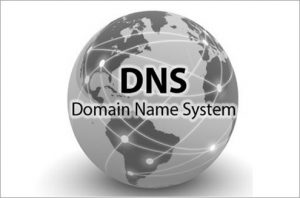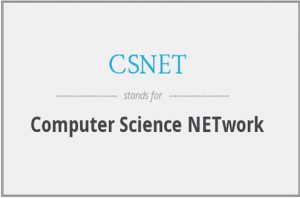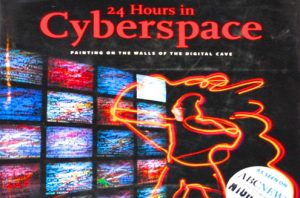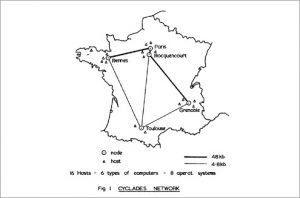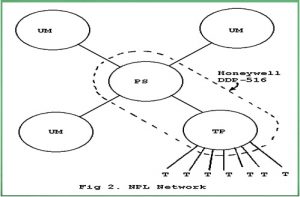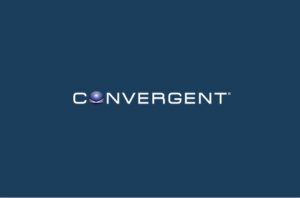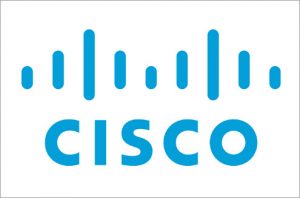On May 14, 1987, Cisco Systems registered the cisco.com domain name, making it 73rd .com domain ever to be registered.
Cisco Systems, Inc. is an American multinational corporation technology company headquartered in San Jose, California, that designs, manufactures and sells networking equipment worldwide. It is the largest networking company in the world. The stock was added to the Dow Jones Industrial Average on June 8, 2009, and is also included in the S&P 500 Index, the Russell 1000 Index, NASDAQ-100 Index and the Russell 1000 Growth Stock Index.
Company History:
Cisco Systems, Inc. is the world’s leading supplier of computer networking products, systems, and services. The company’s product line includes routers, switches, remote access devices, protocol translators, Internet services devices, and networking and network management software, all of which link together geographically dispersed local area networks (LANs), wide area networks (WANs), and the Internet itself. Cisco serves three main market segments: large organizations–including corporations, government entities, utilities, and educational institutions–needing complex networking solutions that typically bridge multiple locations; service providers, including Internet access providers, telephone and cable companies, and providers of wireless communications; and small and medium-sized businesses whose needs include operating networks, connecting to the Internet, and/or connecting with business partners. The company is increasingly developing expertise in the area of fiber-optic networking as well as the concomitant expertise in multiservice networks, which offer video and voice capabilities in addition to the traditional data capability.
Beginnings in Multiprotocol Routers
Cisco Systems was founded in December 1984 in Menlo Park, California, by a husband and wife team from Stanford University, Leonard Bosack and Sandra Lerner. Bosack was the manager of the computer science department’s laboratory, and Lerner oversaw the computers at the graduate school of business. At Stanford, Bosack devised a way to connect the two local area networks in the respective departments where he and his wife worked, 500 yards across campus.
Lerner and Bosack initially tried to sell the internetworking technology that Bosack had developed to existing computer companies, but none were interested. They then decided to start their own business, Cisco Systems, based on this technology (they came up with the name, a shortened form of San Francisco, while driving across the Golden Gate Bridge). Bosack and Lerner were joined by colleagues Greg Setz, Bill Westfield, and Kirk Lougheed, as cofounders. Stanford University later tried to obtain $11 million in licensing fees from the new company, because Bosack had developed the technology while an employee at the university, but eventually the university settled for $150,000 and free routers and support services.
The company was established on a very tight budget. In fact, Bosack and Lerner had to mortgage their house, run up credit card debts, and defer salaries to their friends who worked for them in order to get the venture off the ground, and, even after two years of business, Lerner maintained an outside salaried job to supplement the couple’s income.
Cisco’s primary product from the beginning was the internetworking router, a hardware device incorporating software that automatically selects the most effective route for data to flow between networks. Cisco’s routers pioneered support for multiple protocols or data transmission standards, and could therefore link together different kinds of networks, those having different architectures and those built on different hardware, such as IBM-compatible personal computers, Apple Macintosh computers, UNIX workstations, and IBM mainframes. Cisco thus became the first company to commercially provide a multi-protocol router when it shipped its first product in 1986, a router for the TCP/IP (Transmission Control Protocol/Internet Protocol) protocol suite. A year later, Cisco was selling $250,000 worth of routers per month. Sales for the fiscal year ending July 1987 were $1.5 million, and the company had only eight employees at the time.
Cisco initially marketed its routers to universities, research centers, the aerospace industry, and government facilities by contacting computer scientists and engineers via ARPANET, the precursor to what was later known as the Internet. These customers tended to use the TCP/IP protocols and UNIX-based computers. In 1988, the company began to target its internetworking routers at mainstream corporations with geographically dispersed branches that used different networks. To that end, Cisco developed routers serving an even greater array of communications protocols and subsequently distinguished its routers by enabling them to support more protocols than those of any other router manufacturer. By the late 1980s, when the commercial market for internetworking began to develop, Cisco’s reasonably priced, high-performance routers gave it a head start over the emerging competition.
Although Cisco had a high rate of sales growth, the young company was still short of cash; in 1988 Bosack and Lerner were forced to turn to a venture capitalist, Donald T. Valentine of Sequoia Capital, for support. Valentine, however, required that the owners surrender to him a controlling stake in the company. Valentine thus became chairperson and then hired an outsider, John Morgridge, as the company’s new president and chief executive officer. Morgridge, who had an M.B.A. from Stanford University, was chief operating officer at laptop computer manufacturer GRiD Systems Corp. and prior to that had spent six years as vice-president of sales and marketing at Stratus Computer. Morgridge replaced several Cisco managers, who were friends of Bosack and Lerner, with more qualified and experienced executives. In February 1990, Cisco went public, after which Bosack and Lerner began selling their shares. Sales for the fiscal year ending July 1990 were $69.8 million, net income was $13.9 million, and the company had 254 employees.
Under Morgridge, Bosack had been given the title of chief scientist and Lerner was made head of customer service. However, Lerner reportedly did not get along well with Morgridge and, in August 1990, she was fired, whereupon Bosack also quit. When they left the company, Bosack and Lerner sold the remainder of their stock for $100 million, for a total divestiture of about $200 million. The couple subsequently gave away the majority of their profits to their favorite charities.
Early 1990s: Rapid Growth As Networks Proliferate
Meanwhile, Morgridge built up a direct sales force to market the products to corporate clients. At first, Cisco’s corporate clients were the scientific departments of companies which already maintained large internal networks. Later, Cisco was able to market its products to all kinds of major corporations to help them link the computer systems of their headquarters, regional, and branch offices. As Cisco’s client base grew, the company’s greatest challenge became meeting customer support service needs. The large size of the network systems for which Cisco supplied products made the user support task especially complex.
The company grew at a tremendous rate as its market rapidly expanded. In the early 1990s, companies of all sizes were installing local area networks (LANs) of personal computers. As such, the potential market for linking these networks, either with each other or with existing minicomputers and mainframe computers, also grew. Cisco’s sales jumped from $183.2 million in fiscal 1991 to $339.6 million in 1992, and net income grew from $43.2 million to $84.4 million during the same period. In 1992, Fortune magazine rated Cisco as the second fastest growing company in the United States. In its role as the leading internetworking router provider, Cisco could redefine and expand the market as it grew.
While new communications technologies became widespread, Cisco adapted and added the capabilities of handling new protocols to its products. In the fall of 1992, Cisco introduced Fiber Distributed Data Interface (FDDI) and Token-Ring enhancements to its high-end router. Around the same time, the company also introduced the first Integrated Services Digital Network (ISDN) router for the Japanese market.
Until 1992, Cisco’s products had not addressed IBM’s System Network Architecture (SNA), a proprietary network structure used by IBM computers. In September 1992, however, after IBM announced plans to license its Advanced Peer-to-Peer Networking (APPN) protocol used for SNA, Cisco responded by announcing plans for a rival Advanced Peer-to-Peer Internetworking (APPI) protocol for supporting SNA. By August 1993, Cisco had decided not to develop a rival protocol, because IBM made it clear that APPN would be a more open, multivendor protocol than originally intended. Cisco then proceeded to work with IBM on further defining the APPN standard and bought a license to use APPN technology.
The emergence of asynchronous transfer mode (ATM) technology as a new standard method for multiprotocol data communications posed a challenge to Cisco and the router industry. ATM is a cell-switching technique that can provide high-speed communications of data, voice, video, and images without the use of routers. In early 1993, Cisco entered into a joint development project with AT & T and StrataCom to develop standards that would ensure that ATM operated within existing Frame Relay networks. Cisco also became one of the four founding members of the ATM Forum to help define the emerging standard. In February 1993, Cisco announced a strategy to include ATM among the protocols supported by its products. In fiscal 1994, Cisco introduced its first ATM switch.
In January 1993, Cisco introduced a new flagship product, the Cisco 7000 router, which featured a 50 percent improvement in performance over the AGS+, Cisco’s existing high-end router. In June of that year, Cisco introduced a new low-end, lower-priced product line, the Cisco 2000 router family. The Cisco 2000 was aimed at companies desiring to link their smaller, remote branches or even remote individual employees, but unwilling to pay a premium price. Also during this time, the first network with over 1,000 Cisco routers was created.
International sales became an important part of Cisco’s business. Subsidiaries were established in Japan and Australia, and a European Technical Assistance Center was established in Brussels, Belgium. In March 1993, Cisco Systems (HK) Ltd. became a new subsidiary in Hong Kong. International sales steadily increased, accounting for 35.6 percent of sales in fiscal 1991, 36 percent in fiscal 1992, 39 percent in fiscal 1993, and 41.9 percent in fiscal 1994. Most of Cisco’s international sales were through distributors, whereas in the United States the majority of sales (65 percent in early 1994) were made directly to the end users.
Cisco also began to market its technology, especially its software, more aggressively to long-distance telephone companies, as the deregulation of U.S. telephone carriers enabled these companies to provide more kinds of data communications products and services. For example, Cisco entered into a joint marketing agreement with MCI International to integrate Cisco’s routers into end-to-end data networks over telephone lines. In 1992, Cisco entered new distribution agreements with Bell Atlantic Corp. and U.S. West Information Systems Inc. Cisco also signed marketing agreements in fiscal 1993 with Pacific Bell, whereby Cisco became a preferred router supplier for the company’s network systems.
Cisco similarly began contracting with major European telecommunications companies at about the same time. British Telecom became an original equipment manufacturer (OEM) client of all of Cisco’s products. Other European telecommunications companies that entered into OEM relationships with Cisco included Alcatel of France and Siemens A.G. of Germany. Olivetti of Italy agreed to market Cisco’s products under a value-added reseller agreement late in 1992.
Cisco made other strategic alliances to position itself better in the maturing internetworking market. To reach out to less technical clients, Cisco entered into joint agreements with Microsoft Corporation to market Cisco’s first PC-based router card with Microsoft’s Windows NT Advanced Server networking software through Microsoft’s marketing channels. Similarly, Cisco established a partnership with Novell to integrate Cisco’s routers with Novell’s Netware network software so as to provide links between Netware and UNIX-based networks. Additionally, Cisco began working with LanOptics Ltd. to develop remote-access products.
1993-94: First Wave of Acquisitions
In September 1993, Cisco made its first acquisition. For $95 million, it acquired Crescendo Communications, which had pioneered products for a new technology called Copper Distributed Data Interface (CDDI). Crescendo’s development of ATM technology was also a leading reason for the acquisition. Crescendo Communications was renamed the Workgroup Business Unit, and its switching technologies under development were later incorporated into Cisco’s routers. Cisco made its second acquisition, that of Newport Systems Solutions for $93 million in stock, in August 1994. Newport Solutions sold the LAN2LAN product line, software used in linking local area networks.
Early in 1994, Cisco announced a new networking architecture, CiscoFusion, to provide clients with a gradual transition from routers to the new switched networking technologies of ATM and LAN switching. CiscoFusion allowed users to take advantage of both routing and switching techniques. As part of this architecture, several new switching products were introduced in March 1994, including the ATM Interface Processor and the Catalyst FDDI-to-Ethernet LAN switch. The latter was the first new product of the Workgroup Businesses Unit since the acquisition of Crescendo.
During this time, Cisco moved its headquarters from one end of Silicon Valley to the other, from Menlo Park to a newly constructed office building complex in San Jose, California. The growing size of the company had necessitated larger office space. The company’s workforce had grown from 1,451 in July 1993 to 2,262 in July 1994, as Cisco hired talent from smaller, struggling networking companies which were laying off personnel. In fiscal 1994, Cisco topped $1 billion in sales, ending the year on July 31, 1994, with $1.24 billion in net sales, a 92 percent increase over the previous year, and $314.9 million in net income, 83 percent more than fiscal 1993. Later in 1994, in October, Cisco completed two more acquisitions of firms involved in the switching sector. It spent $240 million for Kalpana, Inc., a maker of Ethernet switching products; and $120 million for LightStream Corp., which was involved in ATM switching and Ethernet switching and routing.
Astounding Growth Under John Chambers Starting in 1995
In January 1995 John T. Chambers was named CEO of Cisco, with Morgridge becoming chairman and Valentine vice-chairman. Chambers, who had previous stints at IBM and Wang Laboratories before joining Cisco in 1991, stepped up the company’s acquisition pace to keep ahead of its rivals and to fill in gaps in its product line, aiming to provide one-stop networking shopping to its customers. The company completed 11 acquisitions in 1995 and 1996, including Grand Junction, Inc., maker of Fast Ethernet and Ethernet switching products, purchased for $400 million in September 1995; and Granite Systems Inc., a maker of high-speed Gigabit Ethernet switches, bought for $220 million in September 1996. The largest deal during this period, however, was that of StrataCom, Inc., a $4.67 billion acquisition completed in April 1996. StrataCom was a leading supplier of ATM and Frame Relay WAN switching equipment capable of handling voice, data, and video. The addition of Frame Relay switching products to the Cisco portfolio was particularly important as that technology was being rapidly adopted by telecommunications companies needing to increase the capacity of their networks. The deal was also a key step in Cisco’s attempt to move beyond its core customer area of ‘enterprise’ customers–i.e., large corporations, government agencies, utilities, and educational institutions–into the area of telecommunications access providers, an area in which it faced entrenched and formidable competition in the form of such giants as Alcatel, Lucent Technologies Inc., and Nortel Networks Corporation.
Cisco continued its blistering acquisitions pace in 1997 and 1998, completing 15 more deals. The largest of these was the April 1998 purchase of NetSpeed, Inc., a specialist in digital subscriber line (DSL) equipment, an emerging technology providing homes and small offices with high-speed access to the Internet via existing telephone lines. Another emerging networking technology was that of voice-over-IP (Internet Protocol), which essentially enables the routing of telephone calls over the Internet. The acquisitions of LightSpeed International, Inc. in April 1998 and Selsius Systems, Inc. in November 1998 helped Cisco gain a significant presence in the Internet telephony sector. The areas of DSL and voice-over-IP provided additional examples of Cisco’s strategy of acquiring its way into emerging networking sectors.
By the late 1990s Cisco Systems was the undisputed king of the networking world. In July 1998 the company’s market capitalization surpassed the $100 billion mark, just 12 years after its initial public offering–a time frame believed to be a record for achieving that level. Revenues reached $12.15 billion by fiscal 1999, a more than sixfold increase over the fiscal 1995 result of $1.98 billion. During 1999 Cisco became even more acquisitive, snatching up an additional 17 companies, in the process gaining presences in two more emerging areas: fiber-optic networking and wireless networking. Several fiber-optic companies were acquired, including start-up Cerent Corporation, which was purchased for about $7.2 billion in the company’s largest acquisition yet. Fiber-optic networks were particularly being built by telecommunications firms aiming to take advantage of their capacity for handling massive quantities of voice, video, and data, making Cisco’s entry into this segment of vital importance. In late 1999 Cisco announced that it would acquire the fiber-optic telecommunications equipment business of Italy’s Pirelli S.p.A. for about $2.2 billion, gaining Pirelli gear that takes a beam of light and breaks it into as many as 128 ‘colors,’ each of which can carry a separate stream of voice, data, or video. Cisco’s key wireless acquisition also came in late 1999 with the announcement of the $800 million purchase of Aironet Wireless Communications, Inc., maker of equipment that creates LANs without wires in small and medium-sized businesses. The technology was also expected to be transferred to the home environment, where Cisco aimed to capture what was predicted to be an area of rapid early 21st century growth: the networked home. During 1999 Cisco also acquired GeoTel Communications Corp., a maker of software for routing telephone calls, for about $1.9 billion.
By early 2000–following 1999’s frenzied bull market in high-tech stocks–Cisco’s market value surpassed $450 billion, making it the third most valuable company in the world, behind Microsoft and General Electric Company (for a brief period in late March, Cisco actually ranked as the most valuable company in the world, with a total market capitalization of $555 billion). Revenues were soaring, as were earnings, which reached $906 million for the second quarter of the 2000 fiscal year alone. Rather than slowing it down, Chambers planned to increase the company’s acquisition pace, with the addition of as many as 25 companies during 2000. Through acquisitions and through strategic alliances with such industry giants as Microsoft, Hewlett-Packard Company, and Intel Corporation, Chambers aimed to increase Cisco Systems’ revenues to $50 billion by 2005. Cisco’s presence in nearly every networking sector, the speed with which it typically entered emerging areas, and its proven ability to absorb and expand acquired companies provided evidence that the company was likely to reach this lofty goal and to continue in its role as the undisputed leader of the networking equipment industry.



